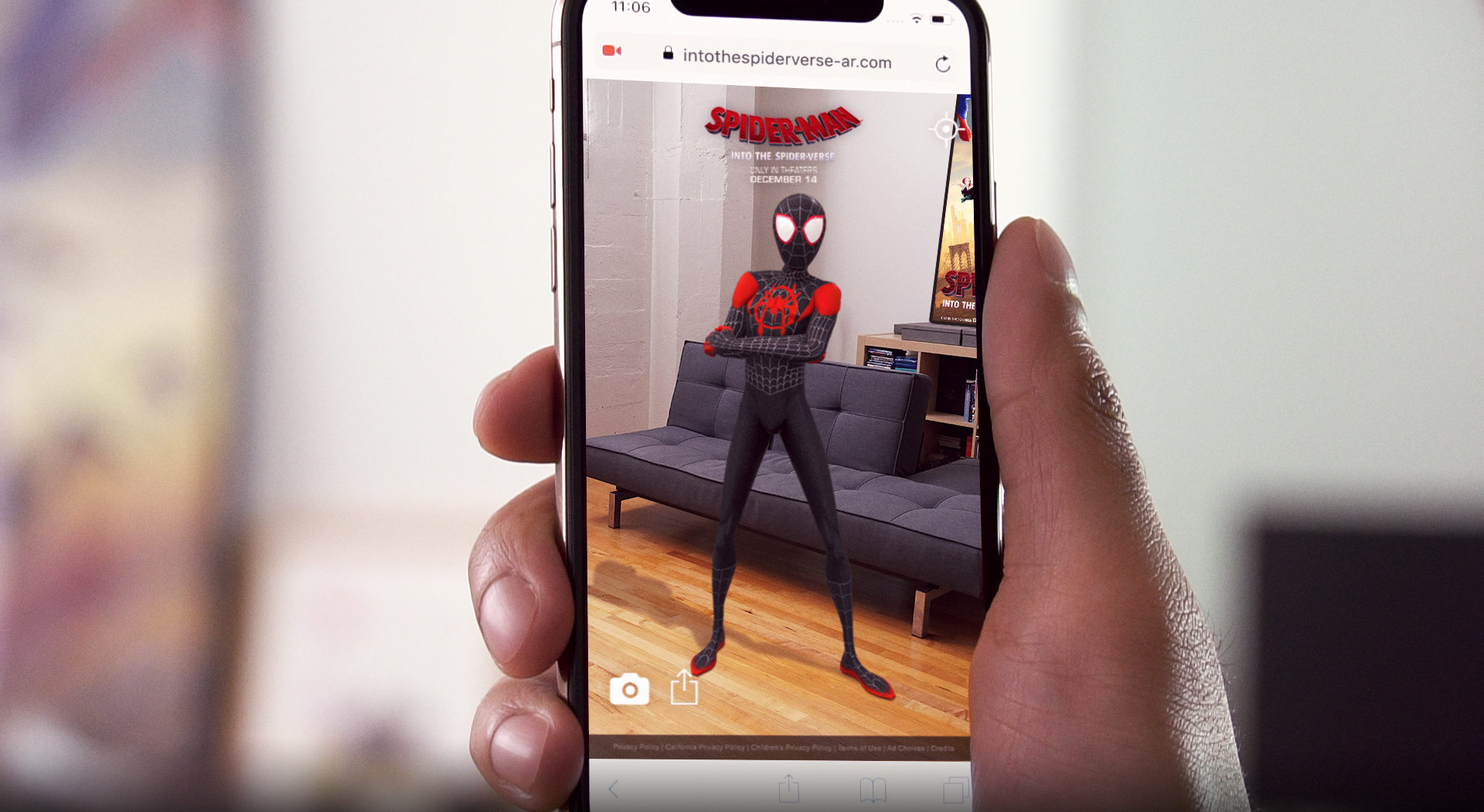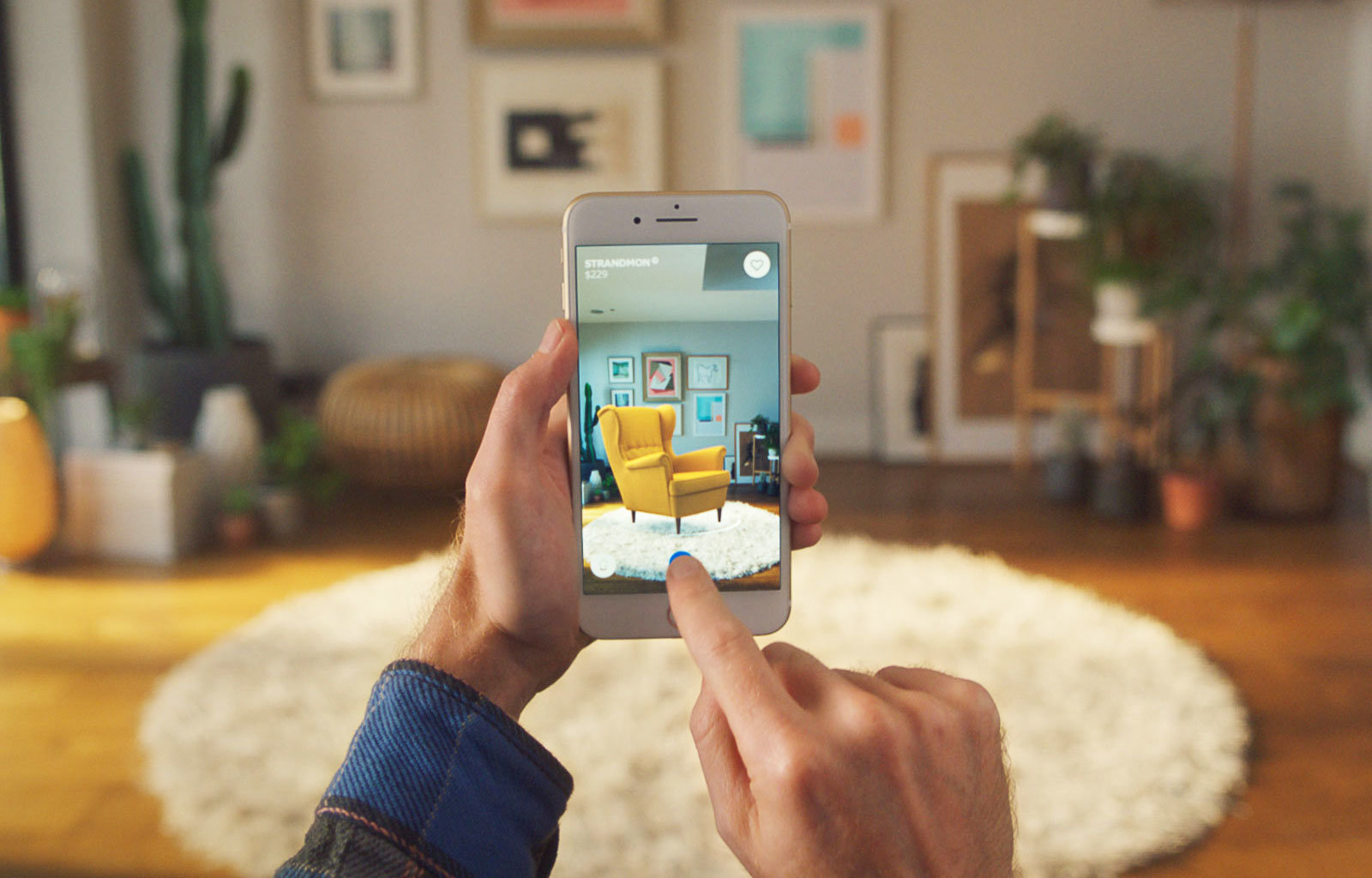Most people today have heard of Augmented Reality (AR). AR, not to be confused with VR, allows users to experience interactive virtual elements displayed over the top of their real world environment. A huge number of brands and companies have already made use of AR in their marketing and as a workplace tool, however for most people the release of Pokemon GO in 2016 was their first time experiencing the technology.
One of the big problems with using Augmented Reality for business or consumer facing experiences is that up until recently it relied on users downloading and installing an app, and using markers to trigger content. Being confined to apps creates a barrier between the AR and the user as it is just one more step required for them to complete before accessing an experience.
So what is WebAR, and how will it change things? Put simply, WebAR is Augmented Reality that takes place inside your browser. It removes the need for downloading specific apps – users can go to AR-enabled websites and experience the same functionality and features. This advancement in the technology will increase the potential reach for a consumer experience massively, as using Augmented Reality apps will become as easy as clicking a link sent to you by a brand, friend, or employer.
WebAR began with allowing users to place static objects in their real world and interact with them. This in itself was a big leap forward in browser technology, and gave a real taste of the possibilities for creating web based AR content. Since then there have been huge leaps forward in the capabilities of WebAR, with some really engaging experiences being released to the public.
Most recently Sony Pictures released a WebAR experience for Spider-Man: Into the Spider-Verse, which allowed users to interact with a 3D character, take photos, and share their pictures on Facebook, Twitter, Instagram, and other social channels. The whole experience can be accessed in browser, with no need to download a separate app.
But Web AR is more than just fun and games – it will completely revolutionise the retail sector. Consumers will be able to see a product in 3D from the comfort of their own home, without the need to jump through the hoops of installing a dedicated app and making an account.
Most of us turn to Google when we are looking for something new and specific to buy, be it a new coat, car, or sofa. When Web AR becomes widely available we’ll be able to not only search for what we are looking for, but see it, rotate it, inspect it, make an informed decision on whether we want to buy it or not. This will ultimately have a positive impact on purchasing decisions and drive sales, and minimise returned items.
Take furniture shopping for example – the most common reasons for returns are that products are not the right size, or don’t look right in the customer’s room. If a store gives you the opportunity to see how it will look and fit in situ, it will give you the confidence that you are buying something that will really work in your home, making you less likely to need to return it. This in turn allows for a really positive and meaningful experience with that retailer, encouraging repeat visits and purchases.
In the last few years we have seen Augmented Reality become widely adopted within large corporations, with use cases ranging from employee training and everyday work tools, to fun activities and communication devices for internal events.
A usual stumbling block for corporate AR applications is the often complex process to get the apps onto employee smartphones. Most corporations have a centrally managed organisation app store that pushes the applications out to every user device, which means that any update to an experience or tool needs to not only be wrapped into the app, but it also needs to go through various stages of publishing to get it to employees.
Web AR will effectively streamline this process as approved updates can be rolled out to a website, so there won’t be an application to update. Users can then simply access the experience online and automatically see the latest updates that have been pushed to the site. There will be no need to worry about memory space on work devices – there is nothing to download as experiences will take place in the user’s browser.
At Sliced Bread we have been really excited to follow Web AR as it has developed, and are already working on converting some of our AR existing projects, such as Virtual Vortex, for use in browser. If you are interested in talking to us about what you could do with Web AR for your brand or business, feel free to give us a call on +44 (0)207 148 0526.












